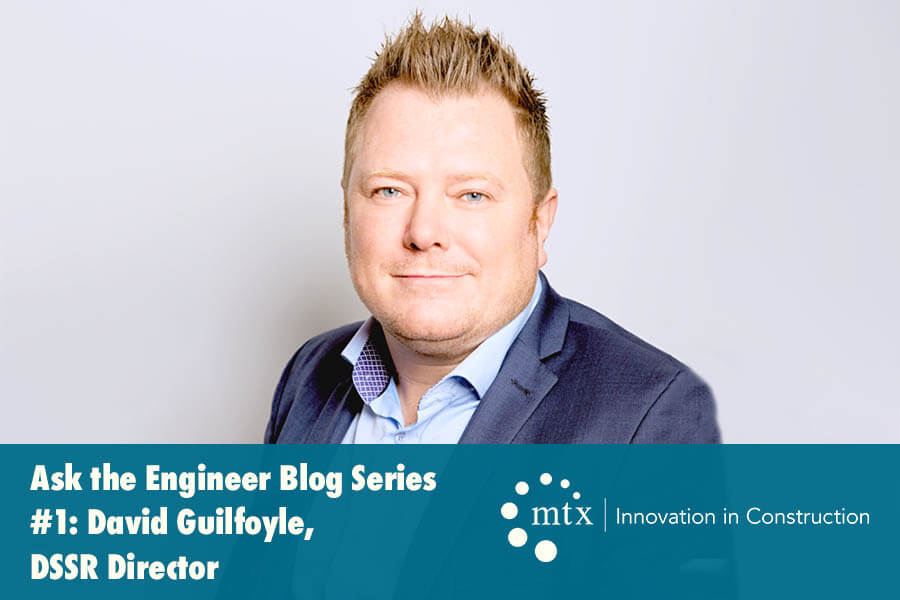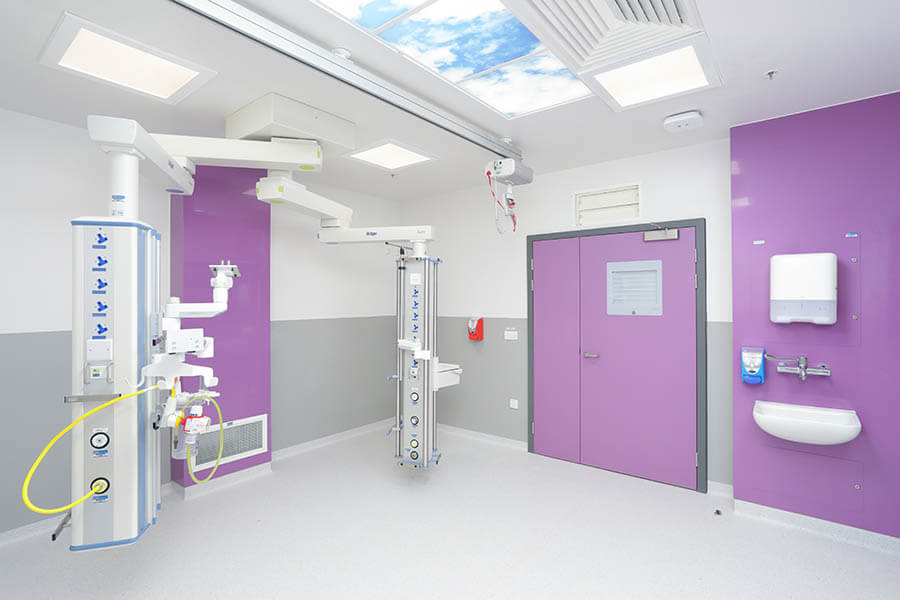
Ask the Engineer Blog Series #1 – David Guilfoyle, DSSR Director
Q. Tell us briefly about your experience in the industry?
“Straight out of school I was employed by a local engineering consultancy for 4 years before joining DSSR in 2000. I undertook all my engineering training and qualifications at DSSR and became a chartered engineer. Since I started as an engineer I have been involved in healthcare, but I have now chosen to specialise in that area, and I run the day-to-day operations of the Manchester and Harrogate offices.”
Q. Why healthcare?
“I have worked on pharmaceutical and education projects but with healthcare every project that comes through the door is a different challenge and has a bespoke element to it, so you are not simply repeating the same tried and tested solutions. Every trust requires something different – even something simple like a ward bedroom – and they have different preferences on items like ventilation strategies. Those nuances make the work more interesting. Designing residential schemes just would not get me out of bed in the morning!”
Q. Describe your primary function as an engineer?
“Architects make buildings look good, but we make a building work through the systems we design that control often intangible ambient elements in a service environment including temperature, light, air quality and even noise. We make them habitable.”
Q. What is especially challenging about working within the healthcare sector?
“The most important driver is to make sure the building is compliant, with the challenges of meeting relevant guidelines and standards. It is vital to engage with and involve the various stakeholders which in a healthcare building includes the Trust, estates teams, end users and patients. Their input must be fed into the solution, which requires good coordination and effective communication.
“They must also understand precisely what they are getting in the finished building and the cost and operational implications before they get into the detailed design stage of the project. Especially priorities such as achieving zero carbon and what that entails. It is a two-way conversation – we need to understand what they want, and they need to know how we are going to interpret those demands and meet their needs, so there are no unwelcome surprises.
“The users must also understand how the building will operate, so they can use new and sophisticated systems to their best advantage. It is often like the difference between driving an older car and a modern model with all its new features. “
Q. What are the key advantages of MMC and Design for Manufacture & Assembly?
“Quality, speed, and repeatability. Once you factor in those three things you get a building more quickly and better quality than traditional build, because so many elements are manufactured offsite in controlled factory environments which ensure consistent quality.”
Q. What are the key disadvantages of MMC and Design for Manufacture & Assembly?
“The main disadvantage is a general perception that buildings using Modern Methods of Construction processes or modular elements result in a lower quality product. This might be the case where organisations are offering lower quality, cheaper solutions. But with an MTX building once it’s finished you would not know that it’s an MMC build. That is testament to the procedures and policies put in place to design and construct that building. It’s the difference between bespoke but factory-made, and mass produced.”
Q. What is your biggest priority as an engineer on a healthcare project?
Compliance. Following guidelines and understanding where they cannot be followed and making clear the reasons why. There are different sets of requirements and functions from mental health buildings to operating theatres, and you need to understand those different requirements and discuss them with the client. All guidelines and requirements are audited by external validation, so those checks and balances are part of the design and construction process. The process must have solid foundations with strong concepts at RIBA stage 2 and 3. For example RIBA stage 3 must have the level of detail which enables us to get approval from the healthcare client. Without the detail it leaves too many open ends for the next stage of the project.”
Q. Is there a single example that demonstrates the value that good engineering brings to an MTX project?
“Oxford John Radcliffe. The project started as a concept meeting on site in the middle of a pandemic. Developing that concept through COVID meant we had to flip the standards on its head as we worked through the crisis – and had to introduce different elements to the project in terms of airflow and pressure regimes. But when it was finished the building worked brilliantly, and we were able to maintain the highest critical care design standards through intricate discussions with the Trust, the Architects and MTX.
“One of the positive elements to come out of COVID is an appreciation of airflow and ventilation in buildings. People were sometimes blasé about the environment in healthcare facilities, but it is now rare to find natural ventilation – which may simply consist of opening windows in a healthcare facility! Mechanical ventilation makes it much easier to change pressure regime environments, and that in turn makes it easier to control air-borne pathogens. Controlling airflow is fundamental.
Q. Looking to the future of mechanical, electrical, and plumbing engineering specifically, what do you see as the biggest challenges?
“A game-changer for the future is net zero carbon but to enable that to happen everything else has to fall into place. Minimise energy use in buildings, enhancement of fabric products, improving U-values etc, then move into system design. Make it Lean then work through the other systems and controls. Understanding how a building operates and controlling it is fundamental to achieving zero carbon efficiencies & objectives. The position of a building, maximising the solar impact, natural light and heat, all must be factored in. Even the shape and geometric form of the building is important. Building Management Systems (BMS) have become more complex, and you have to ensure everything integrates and that the components function how you want them to function. We get called into projects where systems simply do not integrate as they need to. We must ensure the systems are driven by need and function, not technology for the sake of it. First and foremost, healthcare buildings must work for the clinicians, staff and their patients.
“Even things like the lighting – wrong lighting or the wrong position can affect how people feel and their workplace efficiency, and those sorts of factors are amplified in high pressure environments. We also put lots of work into post construction training, to explain how a new facility has been designed and how it is intended to work.
“Systems are continually evolving, and we participate in creating that evolution. Challenge of the new is one of the things that excites me about the business. It is good to be at the forefront of change, influencing what happens and we are involved in the process more than ever before. That challenge and that journey is exciting.”
Q. What is your most important driver – for you personally – in delivering healthcare support? What gets you up in the morning?
“Every day is different. I like the challenge of design, client interaction, discovering or creating solutions. Making sure those foundations are right and moving forward. It is important to be part of a team like MTX that is open-minded, forward-looking, and confident enough to embrace change. We first encountered MTX when we were working on the client side being on the other side of the table as a consultant for a Trust, and we have been working together ever since.
“They are willing to listen because of the trust has been built up over years of collaboration. That trust often comes from how you respond to problems; working together you learn how you each respond to different situations. For example, I have been there in a ceiling void over a weekend, commissioning a system because that was what the project needed – solving problems together. That is the relationship we have – everyone is always willing to go that extra mile to get the result and excellence we all want.”

